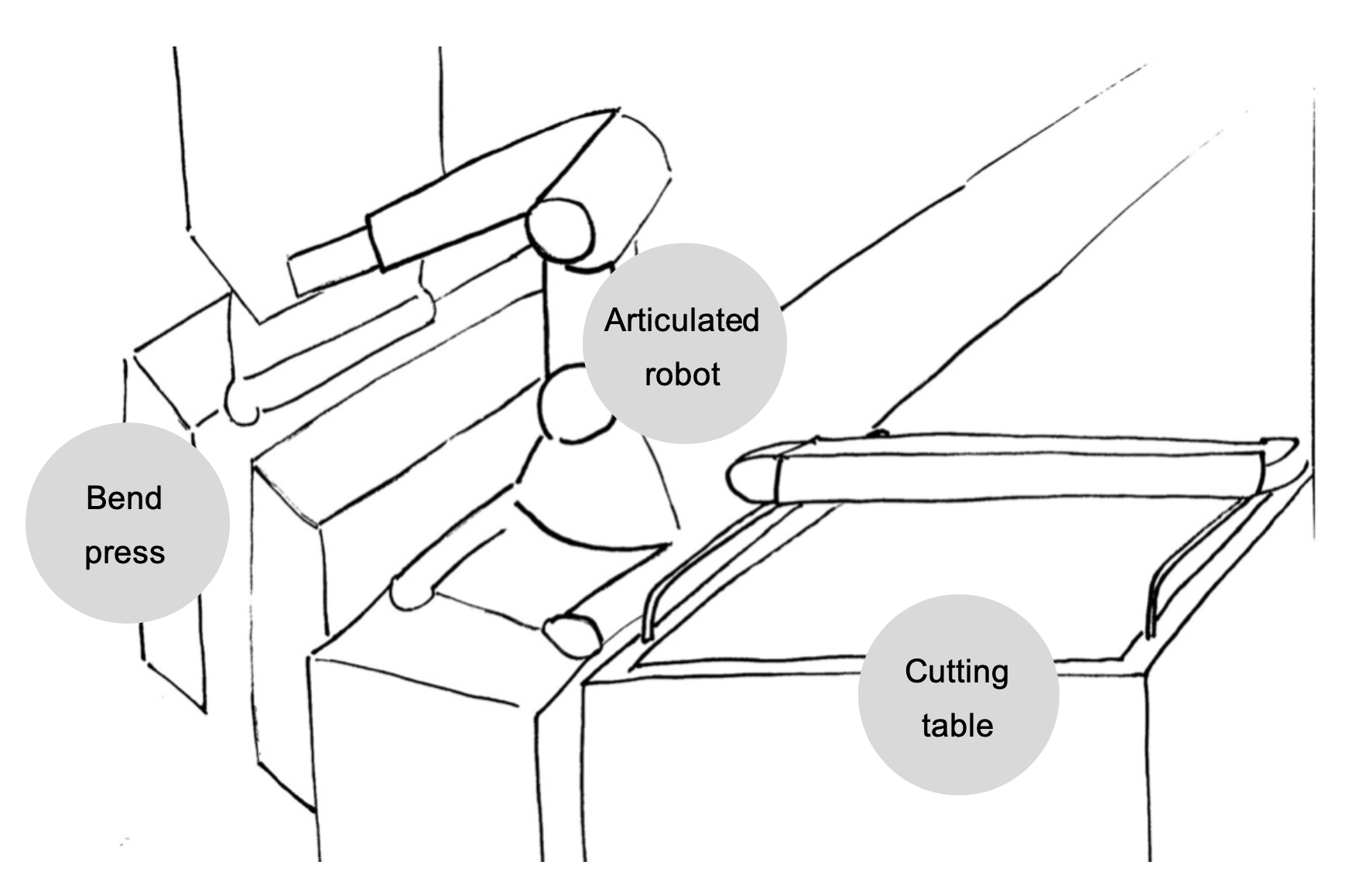April 20-24, Birmingham
Robotics & Market Insights
Automated Sheet Metal Processing: How To Pick The Right Technology
Sheet metal processing refers to various operations performed on metal sheets. Some of the more commonly known are:
- Pressing or Bending
- Stamping or Punching
- Cutting
These processes are often marked by repetitive work in high volumes. This calls for the use of robots and automated processes. Different options are possible depending on which types of processes and products the company is working with. It is crucial to consider the product in alliance with integrators and experts. Based on the material and process, they could help you decide what kind of technology to go for.
Possibilities based on volume and variation
Automation solutions in the sheet metal industry depend on the product mix. In general, volume and variation have a high influence on what makes a good solution for the company.
For large volumes with little variation, the setup is often automated production lines or cells. This is done with special purposed machinery with integrated loading and unloading to ensure no human interaction. Operators are not able to work in the same space as automated machinery and are removed from the processing tasks. They are reassigned to monitoring and certifying the quality.
Mass production gives benefits such as high throughput rate and low takt times. Among the disadvantages are the high initial investment, low flexibility and high setup- and changeover times.
With medium volume and variation, changeover times, tool changes and positioning need to be considered. With a varying mix of products, it is possible to have multi-purposed machinery that can handle different products types. To further increase productivity, one could look into automated loading and unloading of products, done for example by an articulated robot.
Low volume with high variation production has other benefits than mass production. Flexibility, faster time-to-market and customization. The volumes might not be big enough for automated productions lines to be favourable. Therefore, it might be a better solution to keep for instance loading and unloading manual.

Sheet metal processes can be fully automated
As an example of a fully automated cell, you could have a cutting table and a bending press unit. These could be arranged around an articulated robot in the middle that moves metal sheets from process to process. It is important to have tooling which can handle the metal sheets, for example suctions cups or magnets, and that these do not damage the metal or leave marks.
Make sure parts can be moved both into the cell and out to a stock by rollers, a rail or another articulated robot. Such a solution could, if properly built, run 24 hours without human interaction.
A setup like this would require competent programming and consulting from experts to align the machines. It is important that the robot is suited to the task, both in terms of reach and payload depending on the dimensions and the weight of the metal sheets. This will cost time and money, but once it is set up there will be benefits in terms of increased quality, accuracy, precision and throughput.
These benefits only come into force if the produced parts are of high volume and low variety. If not, too much capital is used to handle the many changeovers required, and the advantages of the automated cell would therefore be lost.
With the proper product mix, there will be benefits. Workers normally doing the transferring, bending and transportation of the sheets could be released from the cell. This enables them to work in other areas where creativity and critical thinking is needed.

When and why to go for automated sheet metal processing
Going into robotic processing requires a high initial investment compared to manual work. Despite this, it might be beneficial for SMEs (Small-Medium sized Enterprises) who have grown and need additional capacity to keep up with the increasing demands.
It could be a SME who considers expanding by starting to do metal sheet processing in-house instead of buying the components from suppliers. By producing in-house, you get more control over your quality. This is desirable if, for example, your products need a high-quality finish without too many scratches or rough edges. Naturally, switching to in-house processing requires some capital for investment. One must make out the business case beforehand.
Therefore, you should make sure the right machines are purchased for the right purpose. Make sure the robot has the required specifications to handle the big sheets of metal. For instance, some crucial parameters of articulated robots are the payload and reach of the robots. This is important in feeding and unloading processes where products must not be too heavy for the lifting robots.
When looking into sheet metal processing, always consider the trade-off between volume and variation. Does your product mix allow for the benefits of mass production despite the high initial investment? Or do you need more flexibility to handle different products on your production lines?
How To Find The Right Robot Solution
HowToRobot is a global platform connecting end-users with robot and automation suppliers worldwide. We have the world’s largest directory of robotics companies. Using our guide, you can find the type of robot you need, ideally suited for your application.
You can get tailored solution proposals from various suppliers. Simply describe your project and start receiving answers.
You can also get quotes and receive product information for specific robots, parts, components, and consultancy services. You will receive product information and pricing from multiple vendors.
Please note that impartial HowToRobot experts can help you navigate through the process. Click here to set up a consultation with an expert advisor.
